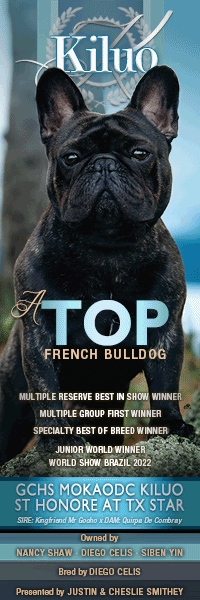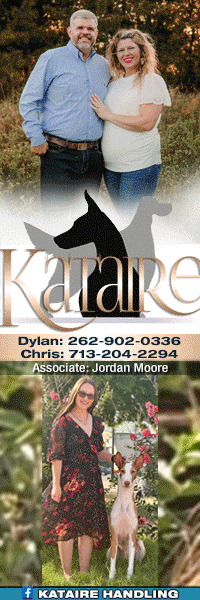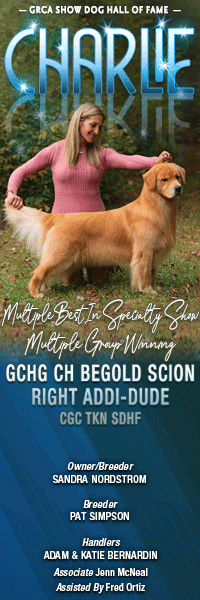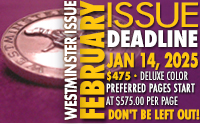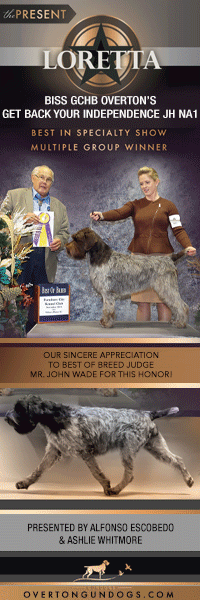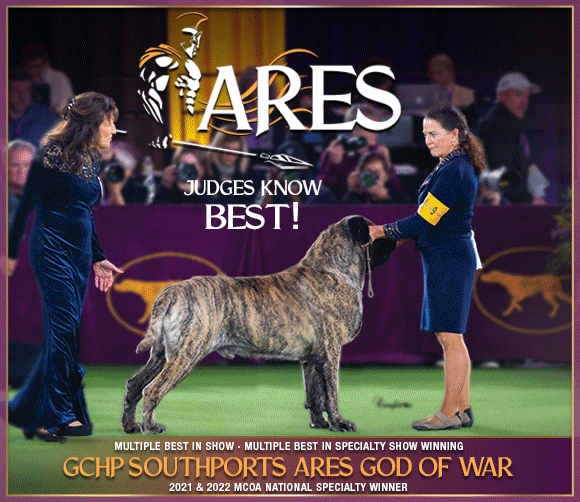From The CC Vault: When & When Not to Waste Your Entry Fee
By Chris Robinson
Originally published: October 2014 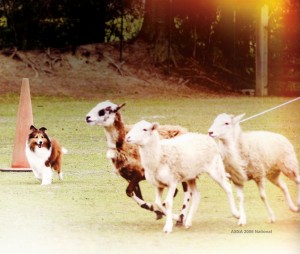
One of the virtues of getting old is that you get to sit back, put your feet up on your desk and pontificate. Sometimes the folks in your vicinity are even polite enough to listen to what you have to say. In this pontification, I’m going to offer some advice to those of you who are new to field work on how to not waste your entry fees and when you should. Since you get what you pay for and this advice is free, you can attach whatever value to it that you choose.
However, I do have some credentials to support this advice. I spent more than 20 years running sporting dogs in AKC or CKC licensed field events and my dogs earned nearly 100 qualifying scores in these events. What’s more, I’ve actually hunted with my dogs for more than 50 years. For those of you who have herding or working dogs or terriers, friends of mine with these breeds say that the ways you can waste your entry fees in field events are pretty much universal and people who participate in performance events also add an “Amen” to that.
Rule number one is read and understand the rules. There are going to be times when you will encounter judges who don’t know the rules but you should because it’s your money that’s on the line. For one thing, it’s important to take advantage of everything the rules allow. If, for example, the rules allow you to talk to your dog, do so even if you think the dog doesn’t need any conversation to be successful. By the same token, if the rules say you can lightly restrain a dog, even if you believe your dog is rock steady, you are a fool to not take advantage of this break because every dog, if they have any moxie at all, will be tempted to break on occasion and this issue gets worse as the dog gets test/trial wise. Dogs aren’t stupid. They quickly grasp the idea that if there is someone standing near them holding a scoresheet, you can’t do anything to straighten out their naughty behavior. It’s a shame to lose out on a qualifying score just because you wanted to show off.
There is another good reason to know the rules. You can lose a qualifying score, a win or a placement simply because you did something that caused the dog to be dropped. This is particularly true at the lowest levels of testing but handlers at the top levels are not immune to this fault. I recall judging master level retrievers once when the dog was going for its final qualifying score to finish its title. The dog had done outstanding work all day long and it was a “can’t possibly miss” to finish. On the very last test and the very last bird of the day, the dog dropped the bird at its handler’s feet during a particularly vigorous shake to get the mud and water off its coat. Before I could say anything to the handler, he bent over and picked up the bird off the ground. A classic case of brain fade cost his dog that final orange ribbon at that test. Dogs mess up enough without our help so it’s important to keep your errors to a minimum, especially those that are completely preventable if you know the rules and don’t lose focus.
While we are on the subject of knowing the rules, a companion to this principle is rule number two: know your judges. If you are anything like the show people I know, you are already doing this with conformation judges. For example, if you know a judge has a love affair with liver-colored Brittanys at or near the bottom of the standard, you certainly would not show an orange Brit pushing the top of the standard to that judge. The same can be said for field judges. If a judge sets consistently bad tests or ignores the rules or thinks that their job is to eliminate dogs in a non-competitive event such hunt tests or events, don’t enter your dogs when that individual is judging. But, be fair before you boycott a judge because, trust me, no matter how conscientious a judge is, you can set a rotten test every now and then. Things like weather and terrain can cause someone who is a really good judge to occasionally set a really crappy test and any judge who says they have never made a bad call is either delusional or an outright liar.
If the event you are doing requires a pair of judges, make sure that you pick the correct judge to add to your blacklist. I recall judging a hunt test once in Canada where my co-judge had no idea of what the rules called for and insisted on setting tests that were in direct violation of what the rules required. In this case, after several futile arguments with this lady, I finally went to the test chair and asked to be replaced because there was no way I was going to acquiesce to tests that violated the rules; but not everyone is willing to take that sort of extreme measure when paired with a bad judge so the fair thing to do is run your dog under each judge in the pair when they are not judging together because one of the two might actually be a good judge who is “junior” to the other and thus would likely be the ‘loser’ in any dispute between the judges over a test design.
But, if you consistently have a problem with a particular judge, don’t run your dog when he/she is judging! Unless you have a masochistic streak, you don’t need the aggravation and certainly, even if you are independently wealthy, you don’t need to waste your money. A herding pal of mine ran into a judge who was really reluctant to qualify dogs handled by women. Once she learned that this particular judge suffered from that bias, she never again ran her dogs when that individual was judging. I had the misfortune of running my dogs a couple of times in hunt tests under a judge who was a model of inconsistency. If three series were required, this judge would set two that were a joy to watch and run but the third would be such an abomination that you’d wonder if the judge needed psychiatric intervention. Once I realized this was a pattern with this judge, I quit running my dogs when he was judging. Finally, if you think a judge is unqualified, don’t run your dog. If someone is judging who has always had professionally trained dogs and has only run a dog the minimum number of times necessary to meet the qualifications for judging, you would be wise to keep your money in your pocket until you have observed that individual’s judging at a few events. Not that these people can’t be or can’t become good judges but you need to have way more skepticism with judges like this until they convincingly demonstrate that they are competent and know what they’re doing.
Another issue in the hunt test program is field trial judges who are so wrapped up in field trial mentality that they can’t differentiate between what’s required of a dog in a test and what they want to see in a highly competitive trial. Way too many field trial judges who cross over to the hunt test program will dump a dog for a single slipped whistle or cast refusal or a slightly short hunt on a marked fall in retriever tests or a dog that points with something less than a 12 o’clock tail in pointer tests or one that fails to exhibit a “windshield wiper” pattern in spaniel tests. In the same category as these judges are those who are so breed-biased that they won’t qualify dogs that do not exhibit the same working patterns of their favored breed. Friends of mine who do herding with their dogs say that there are several judges in the AKC herding program who have a real problem putting up dogs that don’t herd like Border Collies. In the retriever field trial and hunt test world, there are judges who will only qualify Labradors, dumping all other breeds in the category of “style”in hunt tests and finding some real or imagined flaw in field trials because the other retriever breeds don’t act like Labs. Several spaniel people I know complain that they have a hard time earning a qualifying score in spaniel tests from some judges who believe that Field Spaniels or Clumbers ought to hunt like a Springer.
Rule number three is one every Boy Scout learns from the first day in a troop, be prepared. What is true for Boy Scouts goes double with dogs. The time for training is not the day before a test. You can’t take a dog that hasn’t been out for a month, work him for an hour and expect him to be competitive the next day. In fact, I always made it a practice to not train at all the day before a test for two reasons. The first was that if something went badly wrong during the training session, there wasn’t time to fix it. The second reason was that giving a dog the day off before a test frequently made them sharper the next day when the entry fee was on the line.
Make sure your dog has been exposed to all the commotion of an event before your entry fees are at risk. This can be done by running in informal tests or trials or by getting enough people together for a training session so you can simulate an event. If you have sporting breeds, make sure the dog has had a chance to work with all the birds that are mentioned in the premium list. My herding pals say the same is true in their sport. If the premium list says sheep, the dog better have worked with sheep. If the premium list says cattle, the dog needs to have been exposed to cows. On the subject of the latter, if the cows in a trial are the ornery types bent on stomping your dog into the floor of the arena, unless your dog has learned how to deal with mean cows, you will probably save yourself a lot of training headaches if you just forfeit your entry fee.
Don’t be afraid to pick up your dog if the tests violate the rules or if something about the test situation looks unsafe to you is rule number four. It is way better to forfeit an entry fee than to spend weeks or months trying to correct a problem that resulted from a bad test or one where dangerous conditions caused a bad experience for your dog. Also, if your dog is having a problem with something and the test design would exacerbate the problem, don’t run your dog. A few years ago, one of my young dogs had an issue with decoys when he was running at the junior level in hunt tests. He was consistently distracted by decoys on the water. So, when I saw a water test where the path to the bird was covered with decoys, I ate the entry fee rather than make his decoy distraction problem worse. He eventually learned that picking up a phony duck rather than persevering until he found the a real one earned him nothing but a scolding and once he figured that out, he left the decoys alone.
As long as we’re on the subject of persevering, here is rule number five: Perseverance is as important a trait for the dog’s handler to have as it is for the dog. There are going to be things that will happen in the course of training and testing/trialing your dog over which you have no control that will create problems. Sometimes it will take a lot of work to fix that problem. I have done stories with people who have needed a year or more to get past an issue in their dog’s performance and, in most cases, it took many frustrating hours of trial and error. That means you’ll have to summon up the pluck, the grit, the moxie, the doggedness, and the stick-to-itiveness to work your way through the problem. But the rewards are almost always worth it.
Obeying these rules does not mean that there will always smooth sailing to a title. There will likely still be a few potholes in your path. But, keeping these rules in mind should make the trip a lot less frustrating.
Short URL: https://caninechronicle.com/?p=244008
Comments are closed


